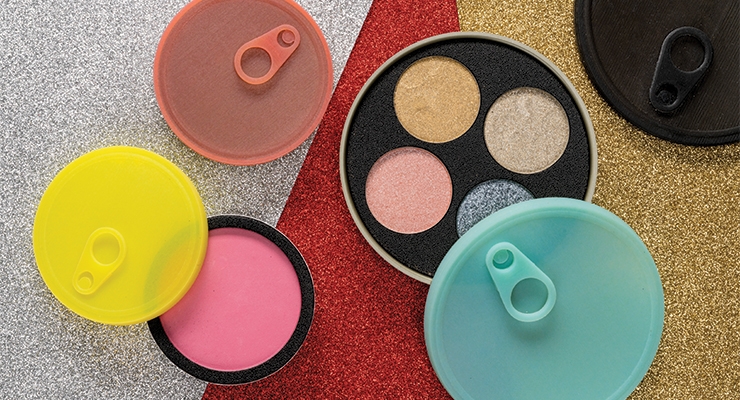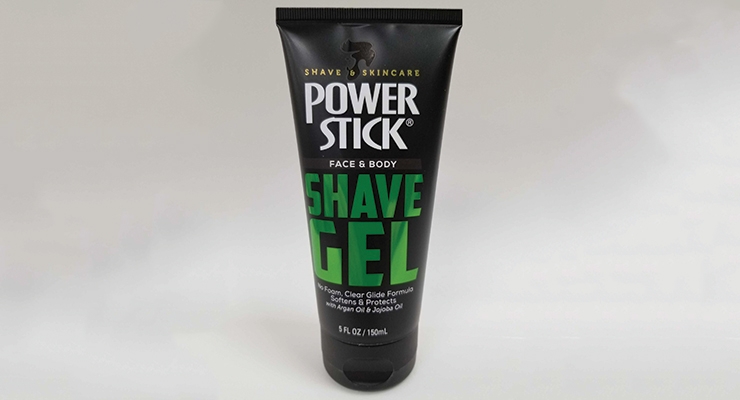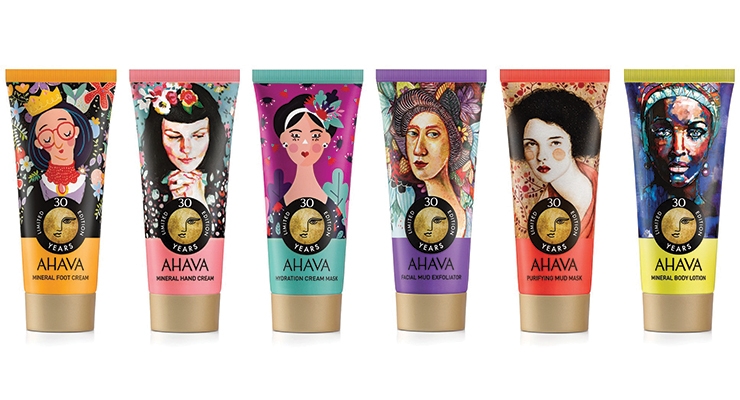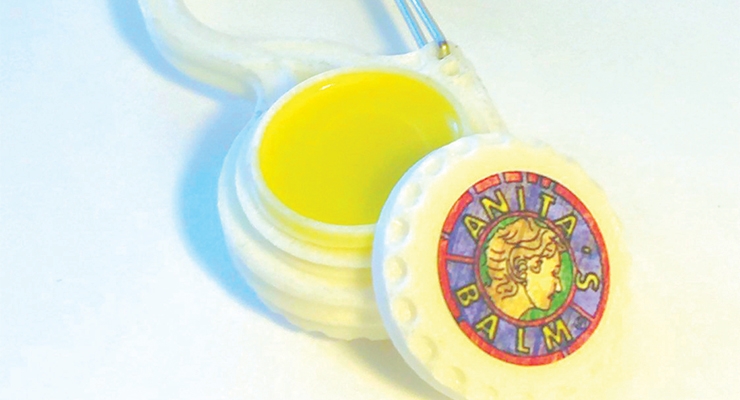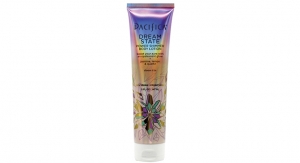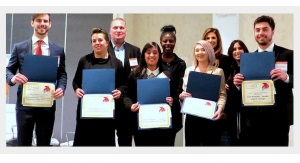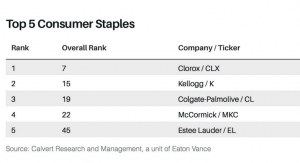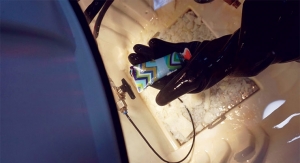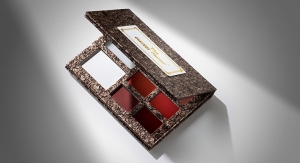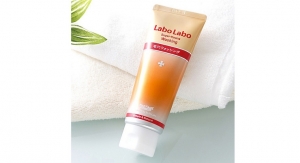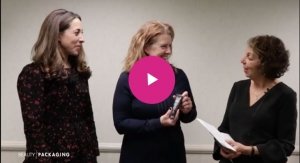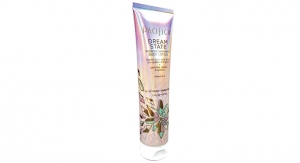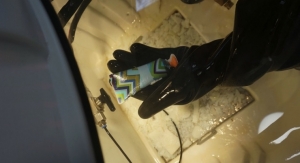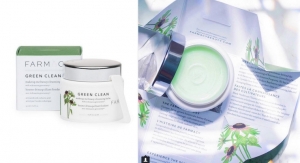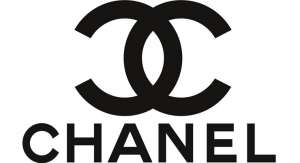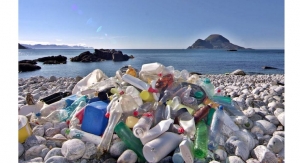Marie Redding, Senior Editor03.04.19
Digital printing is a process done on high-speed digital printers, which can be inkjet, laser printers or other types. It is a faster alternative to offset printing and other methods that require printing plates and presses, rather than a digital file. Digital printing is ideal for low quantities and last-minute design changes. The process is used on labels, folding cartons, corrugated boxes, flexible packaging—and more.
“Digital printing is ideal for boutique, luxury, fragrance, and cosmetics brands, where image matters,” says Greg Maze, senior brand manager, Neenah. “These brands are often working with limited on-shelf real estate, so creating a noticeable presence with package design is important,” he explains. “The package is the brand ambassador, and when done right—using all the latest tools and technologies—it can add value and credibility to the brand story.”
3D printing also begins with a digital file—but that’s where the similarities with other types of digital printing end. Also called additive manufacturing, 3D printing creates a three-dimensional object, layer-by-layer. Unlike traditional manufacturing, the process doesn’t require molds or expensive tooling—or the associated time and costs.
Like many suppliers, Yonwoo/PKG Group offers 3D printing services to its customers for rapid prototyping. “We offer the process to our luxury cosmetic packaging customers, to help bring our customers’ ideas to life by creating rapid prototyped models,” says David Yi, design engineer, Yonwoo/PKG Group.
A design is finalized and revisions are made before tooling is built. “This process helps expedite the customer’s speed-to-market,” adds Andrew Li, design engineer, Yonwoo/PKG Group.
Quadpack uses 3D printing for model-making, not finished products. The company created the “Tin Can” packaging design concept shown using 3D printing, as part of its 2019 Trend Directive. “3D printing technologies are revolutionizing the early stages of package design,” says Jeremy Garrard, head of Design & Advanced Technologies at Quadpack.
One of Quadpack’s goals is to increase its R&D capability to “deliver true innovation,” Garrard explains. He says, “3D modelling is key to testing new ideas. We needed greater speed and flexibility to produce the three types of models we use—and prototype models help us to trial new ideas for new references in our Q-Line range of packaging solutions.”
Both types of technologies are still advancing, and have the potential to one day completely change the packaging and product development processes as brands find relevant applications and innovative ways to use these new developments to their advantage.
“The demand for digital printing is clearly growing, with more Indie brands often in need of quick mock-ups, and it is useful for R&D, when reviewing and validating options for new projects,” says Bruno Lebeault, Viva IML Tubes.
David Tanyà, engineering manager, Quadpack, says, “Digital printing in general is starting to take off, though pricing is still relatively high for medium-sized runs. For very low or very high runs or for a very fast time to market, however, it is an excellent option, especially for photographic-quality decoration. We are getting extremely good results on wood with flat or slightly irregular surfaces, as well as on plastic, metal and glass.”
Many experts agree there is still an untapped potential for digital technologies. “The ability for digital printing technologies to deliver special editions quckly, i.e. ‘short runs,’ is always key. Yet, once a digital printing technology is applicable for long runs, the set of applications truly becomes strategic and a game changer for brands,” explains Ofer Nir, vice president of marketing and business development, Velox.
Digital Growth, By the Numbers
The global digital printing packaging market is estimated to reach revenues of around $28 billion by 2024, and a CAGR of 11% is expected, according to the report by Research and Markets titled, Digital Printing Packaging Market—Global Outlook and Forecast 2019-2024.
The report states: “The rising demand for short-run product printing, variations in SKU (Stock Keeping Unit), and seasonal and one-off promotional packets is propelling the growth of the global digital printing packaging market. Digital printing helps reduce overhead costs and enhance productivity in the global market.”
Corrugated packaging is the fastest growing segment in the global market, at a CAGR of approximately 12% during the forecast period. Advances in high-performance digital corrugated printers is one factor fueling market growth. Many e-commerce beauty brands utilize corrugated boxes as more than a shipping container—the boxes are decorated inside and out.
There is also a high demand for digitally printed labels, forecasters say, because manufacturers are leveraging labels to enhance a product’s appeal.
What’s New in 3D Printing in the Beauty Industry?
We have seen 3D-printed makeup, but the concept never really took off. The report by Research and Markets mentioned above, shows promising growth for the global digital printing market; however, it also states, there is a “sluggish adoption of digital printing for packaging.” There are a couple of exciting ways beauty brands are applying the technology to product development.
Chanel debuted the first-ever, mass-produced 3D printed mascara brush for its Le Révolution Volume mascara last June, but it is still only available in the UK. The revolutionary brush is made by printing successive layers of a polyamide powder, polymerized with a laser beam. Developed in partnership with Erpro 3D Factory, the patented design is not possible to make using a typical injection molding process. It features microcavities in the core to hold a large amount of product, as well as a granular texture that increases the surface area on individual strands, which helps the mascara better adhere to lashes.
Now, Johnson & Johnson and Neutrogena have found an innovative skincare application for 3D printing—the first-ever “personalized micro-3D printed face mask.” The news was announced at the Consumer Electronics Show in January. Neutrogena Mask iD may be available to consumers by this fall.
Dr. Michael Southall, global R&D lead, J&J Consumer, says, “Neutrogena MaskiD marks one step towards a new model of product development where we find innovative uses for the latest technology, such as digital imaging, skin analysis, and 3D printing, to give consumers new ways to achieve their best skin ever.”
The single-use sheet mask is personalized, based on data, when the consumer answers a questionnaire or uses the brand’s Skin360 app and skin scanner powered by FitSkin. Attach the scanner to a smartphone, take a 3D selfie, and hold it up against your face to scan your skin. The app’s analyzing tool creates a precise multi-dimensional face map based on exact measurements and physical characteristics.
Each personalized mask contains a custom combination of ingredients in six different facial zones, based on each individual’s data. Using a proprietary 3D-printing process, high-efficacy ingredients are printed onto the custom-fit hydrogel mask, in the zones where they will deliver the greatest benefit for that individual. The masks will contain one or all of the following ingredients—hyaluronic acid, niacinamide, feverfew, N-acetyleglucosamine, and vitamin C.
Sebastien Guillon, global president of beauty, J&J Consumer, says, “Women who embraced our Neutrogena Skin 360 personal skin analysis tool told us how excited they were to finally understand the unique aspects of their own skin—and they told us they want more. They wish they could find personalized skincare solutions that address their skin’s unique needs, and we believe that sheet masks are the perfect opportunity to deliver on this unmet need.”
Estée Lauder Modernizes Manufacturing
Prototyping continues to be a useful application for 3D printing in the packaging industry.
The Estée Lauder Companies (ELC) is using the latest 3D printing technology to modernize manufacturing and the prototyping process at its Whitman manufacturing facility in the UK, where many of its prestige skincare brands, and Jo Malone London fragrances, are produced.
When producing Jo Malone London’s 30ml fragrance bottles, for example, new 3D printed jigs are being used as a quality assurance tool for label alignment on the bottles, saving time and cost. The color red has been chosen so that 3D printed parts are easily identified and engineers know the part is available on-demand.
3D printed parts are also used in the high-speed assembly of Estée Lauder’s Advanced Night Repair Recovery Complex to ensure the accurate centering of the glass pipettes before inser-tion into the bottle.
Chris Lee, process engineer at ELC’s Whitman Plant said, “Although our primary reason for adopting the new 3D printing technology was to keep up with the latest innovation in manufacturing, 3D printing is also helping us to quickly and more effectively problem-solve many more challenges than we ever could have imagined.”
He continued, “Thanks to the use of the technology, it’s now possible to design and test new machine parts in hours instead of weeks or months, and for as little as $1.31 per part rather than thousands of dollars.”
Digital Benefits Include Minimizing Waste And More
There are numerous benefits that 3D printing and digital printing offer—and one is “green,” since they both minimize waste. When describing 3D-printing, ELC states, “The parts are ‘built’ layer by layer instead of being ‘machined out’ of larger blocks of material, as in the traditional method of subtractive manufacturing.” ELC uses biodegradable PLA (polylactic acid) for its 3D printing, like many companies.
Digital printing provides the flexibility to print exactly the volume required. The report mentioned above states, “The ability to print just-in-time quantities is a major benefit.”
Digital printing is essentially “printing on demand.” Neenah’s Maze says,“Digital printing offers brands the freedom to produce packaging as they need it, rather than having to store thousands of boxes or deplete stocked packaging before being able to update the design. The use of variable data also offers an advantage for smaller brands that may have multiple product colors, flavors, or scents, to identify within one package design.”
Customization is another major benefit that digital technologies deliver. “Niche products are ‘in’ for the beauty business, and limited editions. Using digital printing as a decorating process allows a brand to customize different SKUs, with low MOQs,” says Gregory Grimonprez, technical sales director, Stoelzle Glass USA.
Quadpack’s David Tanya adds, “Digital printing jobs are quick and straightforward to set up, so you can switch designs with ease. The technology also handles photographic images well and low set-up costs make it a better candidate for low runs compared to, say, screen printing.”
Decorating Glass, Digitally
One exciting packaging application for digital printing is decorating glass—and Stoelzle Glass is one supplier paving the way in this area.
“It is like the touch of a painter,” says Stoelzle’s Grimonprez, describing the decorating process, when using digital printing on glass. He explains, “Digital printing allows us to have the same effect when printing glass, as if we were printing on a folding box or label. And, we are now able to create a textured effect, such as a wooden or marble effect.”
The team is even able to mimic the look of engraving. “We are also able to decorate on areas that some conventional silk-screen methods would not allow. We can, for example, use debossing and embossing and print on radius areas,” Grimonprez says.
Stoelzle’s digital printing process allows for three different looks: translucent; opaque with a white background; or the same image on the front and back, using a white middle layer. “We could not achieve these effects using conventional decorating techniques,” Grimonprez adds.
Few suppliers offer this technology for glass, however, as it entails more than just having the machine, since a level of expertise is required. There can be challenges with the inks and the curing process. Digital printing needs to meet the required specifications, and the decoration needs to undergo testing with the juice, cream, etc.,” Grimonprez explains.
The team at Stoelzle Glass has a number of projects in the works with prestige beauty and fragrance brands, but can’t reveal details yet.
Digitally Decorating Tubes
The team at Viva IML Tubes has long been offering its digital printing on its in-mold labeled tube, but the packaging solution is still in demand, and interest continues to grow, the company says. “It is ideal for brands that have very small MOQs—or that need quick, finished mockups for a presentation,” says Viva IML Tubes’ Lebeault.
One unique look is a metallic decoration, which Lebeault says he can achieve on his tubes using a foil label. The team at Viva IML recently worked with the team at AP Deauville, when the brand wanted to launch its Powerstick products in tubes.
“We did some digital mock-ups, which they loved because they showed details, including the metallic fluorescent effects that they had envisioned,” says Lebeault. “We printed the digital In Mold Label on the same foil substrate we later used in production.”
Plastube recently invested in its digital printing capabilities, and the supplier says it now has the most advanced decorating technology available in the North American market. The supplier’s new state-of-the-art digital inkjet printer has the ability to fulfill low MOQs, quickly.
“Our new digital press is by far the most expensive single piece of equipment that we have ever invested in,” says Steven MacPhail, vice president of sales and marketing, Plastube. “It has a unique ability to print directly onto the circular surfaces of the tube after the tube sleeve has already been formed into its cylindrical shape. This is a big technological advancement for the tube industry.”
Innovations in Direct-To-Shape Digital Decorating
A digital decorating process allowed Ahava to create a special edition anniversary collection last June—and its tubes featured six different designs. The design concept is ‘female empowerment,’ which is depicted in the paintings replicated on each tube. “Each image reflects the way women are perceived, in the painter’s eye,” says Ofer Nir, VP of marketing/business development, Velox.
Velox worked with Lageentubes on the project for Ahava. “It features high-quality portrait images. The continuous decoration is printed 360 degrees around the tube, in solid, vivid colors. It is a departure from a basic style, with a background, logo, and text,” says Nir.
Velox has developed proprietary direct-to-shape, also known as DTS, inkjet technology with uniquely formulated inks. Velox offers its DTS decoration on aerosol cans and plastic tubes. The supplier is the global developer of the world’s only mass-produced DTS digital decoration for the rigid packaging industry.
Ahava’s collection shows off Velox’s superior decoration quality. “Our technology delivers, at full-production speed, capabilities that outstrip the benefits of analog printing solutions, while allowing a more efficient and flexible production process,” says Nir. “We are introducing an entirely new approach to digital printing—and it is poised to disrupt the packaging decoration market,” he adds.
Choosing the Right Board for a Digital Press
Just as a painter needs the right type of canvas, if you begin a digital printing project with the right folding board and/or label papers, you’ll achieve a better result. “Our premium folding board and label papers are guaranteed for high-fidelity printing on digital presses,” says Neenah’s Maze.
For brands that truly want to create a folding carton or box that will stand out, Neenah offers a wide range of colors, textures and custom solutions. “We also offer a portfolio of paper-based products for digitally printed retail signage and display graphics, making it easier for brand managers to create a more consistent brand message across all customer touch points,” Maze says,
Neenah’s portfolio of packaging papers and labels includes a 97 bright for “the whitest box on the shelf,” the company says. Neenah also offers a dyed-through deep black option. “This eliminates unsightly white edges,” explains Maze.
The company also offers custom solutions for precisely matching a brand identity color, or for creating a unique color and texture combination. “Customers respond instantly to color and texture, and they are more likely to become repeat customers based on the emotional connection created from that initial response,” says Maze.
Other industries, outside of beauty and packaging, seem to be finding very innovative ways to utilize digital technologies—especially 3D-printing. The world’s first 3D-printed stainless steel bridge was unveiled in the Netherlands last October, where a team of designers has also 3D-printed the components to build homes.
In the recent study, Digital Wood: 3D Internal Color Texture Mapping, a research team at New York’s Columbia University describes a method of replicating the external and internal structure of materials such as wood using a 3D printer and specialist scanning techniques.
The U.S. Marine Corps recently worked with architecture firm SOM to create the first 3D-printed structure approved for human use in the U.S.—concrete barracks, which they will test in 2021. Mass production is expected to start by this June in Italy on the world’s first 3D-printed electric car.
In fashion, The Girl and the Machine creates 3D printed knitwear using a revolutionary 3D knitting technique. Founded by Rosanne van der Meer and Annelie Ansingh, the Dutch duo states, “We’ve created a digital knitwear tailoring system that allows us to create personalized knitting code… as ‘digital tailors,’ we can make the feeling of couture accessible for everyone…this is the future of fashion.” The company is in the process of accepting pre-orders on Kickstarter and is looking for financing to proceed with its next round of production, planned for this spring.
As more companies continue to use new 3D and digital technologies, we’ll no doubt see new packaging applications on the market soon.
Anita’s Balm, a small family-run business that has been selling skincare products online and in stores throughout Georgia since 2011, is now using three MakerGear 3D printers to produce its own packaging—and, for other brands.
Requests from other small beauty brands, such as SkinEscens, to design and supply packag-ing are continuous, according to Anita Redd, the company’s founder. Typical orders are usually for hundreds of pieces, and Redd’s husband operates the 3D printers. Small jars and lip gloss pots are often requested.
Redd uses PLA, sourced from sugarcane, beets or corn, which she purchases as pellets and extrudes in-house. She also uses a colorant, and purchases labels from a local sign company.
Redd designed and 3D prints a carabiner package for her product, Anita’s Balm, which she originally created to help treat eczema. The all-natural balm, made with only olive oil and bees-wax, quickly gained a following because it worked so well. “Many moms use it on babies and young children, so I created this package for them—it can hang on a diaper bag,” says Redd.

